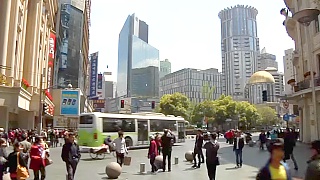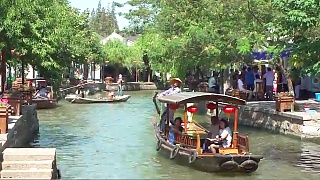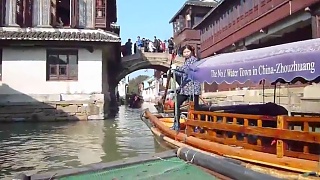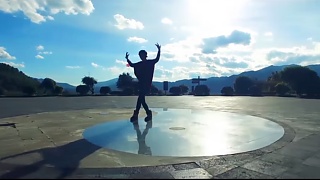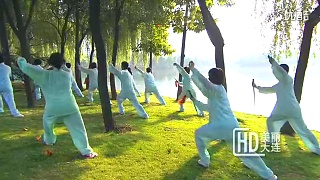With Our Travel Journal ...
[640],shadow=true,start=,stop=ZhuJiaJiao Ancient Water Town Travel Guide
History of ZhuJiaJiao
ZhuJiaJiao, often referred to as the "Venice of Shanghai," is an ancient water town located about 47 kilometers from the bustling center of Shanghai. With a history spanning over 1,700 years, this charming town is known for its picturesque canals, traditional Chinese architecture, and tranquil atmosphere. It was established during the Three Kingdoms Period and flourished during the Ming and Qing Dynasties as a vital trading hub.

Top Attractions in ZhuJiaJiao
1. Fangsheng Bridge
The Fangsheng Bridge, built in 1571, is one of the most iconic landmarks in ZhuJiaJiao. It is the longest, largest, and tallest stone bridge in the town, offering stunning views of the water town's canals and ancient buildings.
2. Kezhi Garden
This classical Chinese garden features intricate rockeries, tranquil ponds, and traditional pavilions. Originally built in 1912, Kezhi Garden showcases the beauty of Chinese landscaping and architecture.
3. Qing Dynasty Post Office
Dating back to the Qing Dynasty, this ancient post office is the oldest in eastern China. It provides a fascinating glimpse into the postal history of China and houses a collection of old letters and postcards.
4. Great North Street
Great North Street is the main commercial street of ZhuJiaJiao, lined with quaint shops, tea houses, and traditional residences. It's a great place to shop for souvenirs, local crafts, and taste delicious street food.
Activities to Enjoy
1. Boat Rides
Take a traditional wooden boat ride through the canals of ZhuJiaJiao for a unique perspective of the town's historic architecture and scenic views. The boat rides are a relaxing way to explore the waterways.
2. Walking Tours
Stroll along the ancient streets and alleys, explore hidden courtyards, and admire the well-preserved ancient architecture. Walking tours are the best way to immerse yourself in the charm of ZhuJiaJiao.
3. Tea Tasting
Visit one of the many tea houses along the canals to experience traditional Chinese tea culture. Enjoy a cup of freshly brewed tea while overlooking the serene waterways.

Local Food & Delicacies
1. Zongzi (Rice Dumplings)
ZhuJiaJiao is famous for its zongzi, a traditional Chinese food made of glutinous rice wrapped in bamboo leaves, typically filled with red bean paste or meat.
2. Steamed Pork Dumplings
These delicious dumplings are a must-try in ZhuJiaJiao. They are steamed to perfection and filled with savory pork and a touch of soup.
3. Lotus Root Snacks
A local delicacy, these crunchy lotus root snacks are sweet, sticky, and coated with honey. They make for a perfect snack while exploring the town.

How to Get There
By Bus
Take the Huzhu Express Line from Shanghai Stadium, which takes about 1 hour to reach ZhuJiaJiao. Buses run frequently throughout the day.
By Car
ZhuJiaJiao is approximately a 1-hour drive from downtown Shanghai. You can either hire a private car or take a taxi for a more comfortable journey.
By Metro
Take Line 17 of the Shanghai Metro and get off at ZhuJiaJiao Station. From the station, it's a short taxi ride or a 20-minute walk to the water town.
Travel Tips for ZhuJiaJiao
- Visit early in the morning or on weekdays to avoid the crowds and enjoy a more peaceful experience.
- Wear comfortable walking shoes as you'll be exploring on foot and navigating cobblestone streets.
- Bring cash, as many of the smaller shops and food stalls may not accept credit cards.
- Don't forget your camera to capture the picturesque views of canals, bridges, and ancient architecture.
Shanghai is one of China's most dynamic and cosmopolitan cities, blending a rich history with modern skyscrapers and vibrant culture. Here's what you need to know as a tourist visiting Shanghai:
Historical and Cultural Landmarks:
The Bund: This iconic waterfront promenade along the Huangpu River features colonial-era buildings on one side and futuristic skyscrapers on the other, offering stunning views of Shanghai's skyline.
Yu Garden: Dating back to the Ming dynasty, Yu Garden is a classical Chinese garden with pavilions, ponds, and rockeries. The nearby Yu Garden Bazaar is a great place to shop for souvenirs and traditional crafts.
Shanghai Museum: Home to an extensive collection of Chinese art and artifacts, including bronzes, ceramics, paintings, and calligraphy, the Shanghai Museum is a must-visit for history and art enthusiasts.
Jing'an Temple: One of Shanghai's most famous Buddhist temples, Jing'an Temple is known for its beautiful architecture, peaceful atmosphere, and towering golden Buddha statue.
Modern Attractions:
Shanghai Tower: Ascend to the observation deck of this iconic skyscraper, the tallest in China and the second-tallest in the world, for panoramic views of the city.
The Oriental Pearl TV Tower: Another iconic landmark, this futuristic tower offers observation decks, a glass-bottomed skywalk, and a revolving restaurant.
Shanghai Disneyland: Located in the Pudong district, Shanghai Disneyland offers a magical experience for visitors of all ages with its themed lands, attractions, and entertainment.
Shopping and Entertainment:
Nanjing Road: One of the world's busiest shopping streets, Nanjing Road is lined with department stores, boutiques, and restaurants. Don't miss the nearby pedestrian-friendly Nanjing Road East, known for its lively atmosphere and street performers.
Xintiandi: This upscale shopping, dining, and entertainment district features a mix of traditional Shikumen-style buildings and modern amenities, making it a popular destination for locals and tourists alike.
French Concession: Explore this historic neighborhood known for its tree-lined streets, charming cafes, boutiques, and art galleries.
Culinary Delights:
Shanghai Cuisine: Sample local specialties such as xiaolongbao (soup dumplings), shengjianbao (pan-fried dumplings), and Shanghai-style noodles.
Street Food: Wander through the city's bustling food markets and snack streets to taste a variety of street foods, from savory pancakes to grilled skewers.
Practical Tips:
Transportation: Shanghai has an efficient public transportation system, including the subway, buses, and taxis. Consider purchasing a rechargeable transportation card for convenience.
Language: While Mandarin is the official language, English is widely spoken in tourist areas, hotels, and restaurants.
Weather: Shanghai experiences four distinct seasons, with hot, humid summers and chilly winters. The best times to visit are spring (March to May) and autumn (September to November) when the weather is mild and comfortable.
Etiquette: Respect local customs and traditions, such as using polite language and avoiding loud behavior in public places.
Shanghai offers a captivating blend of old and new, with its historic landmarks, modern skyscrapers, vibrant culture, and delectable cuisine. Whether you're interested in history, architecture, shopping, or dining, Shanghai has something to offer every type of visitor.
 ZhuJiaJiao Ancient Water Town, ShangHai
ZhuJiaJiao Ancient Water Town, ShangHai




